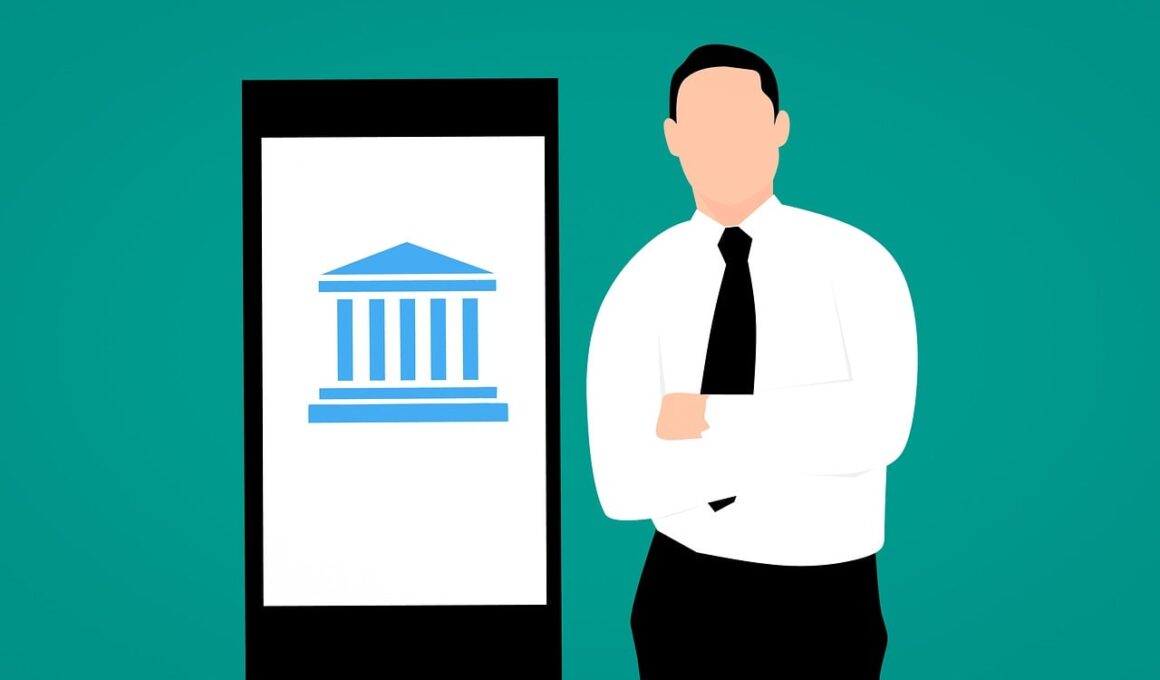BaaS and Open Banking: A Symbiotic Relationship
Banking-as-a-Service (BaaS) and open banking are increasingly intertwining to reshape the financial services landscape. BaaS provides a framework that enables banks to offer financial services through APIs, while open banking promotes innovation by allowing third-party developers to access financial institution data. This collaboration fuels a dynamic financial environment where consumers can access tailored services. By leveraging open banking technologies, banks can integrate various financial products into their platforms, enhancing customer engagement. BaaS allows non-banks to offer banking functions like payment processors or digital wallets efficiently, thereby reducing operational burdens. Banks can, in turn, reach wider audiences by partnering with fintech companies that deliver niche services, improving user experience. This symbiotic relationship facilitates rapid innovation, letting financial institutions adapt to changing regulations and consumer expectations. Security and compliance are paramount for both models, necessitating robust frameworks that protect consumer data. As a result, both BaaS and open banking continue to develop, providing consumers with smarter, seamless financial solutions. They revolutionize traditional banking paradigms, encouraging collaboration between legacy banks and agile fintech startups, ultimately leading to enhanced financial inclusion.”
The collaboration between BaaS and open banking creates a fertile ground for competitive advantages. Fintech companies can harness BaaS to leverage existing bank resources while expanding their service offerings. This strategy enables a more significant reach in the marketplace, particularly in areas like payments, lending, and investment management. Banks incorporating open banking principles tend to improve their customer loyalty, as users appreciate personalized services tailored to their financial needs. Moreover, customer-centric platforms have emerged, combining accessibility and versatility thanks to the API economy. Implementing BaaS facilitates a more streamlined onboarding process for consumers, that enhances user experiences significantly. A notable benefit is the reduction of time and costs linked to creating new banking features or services from scratch. This appeals to both startups and established institutions eager to innovate. Security remains a critical focus as these solutions proliferate. Maintaining data protection while ensuring compliance with regulations like GDPR fosters a trustworthy financial environment. Ultimately, BaaS’s connectivity and open banking’s transparency together create a unified model, reshaping consumer interactions with financial services and elevating expectations for what banks can provide in the future.”
This evolving dynamic has implications for regulatory frameworks as well. Policymakers must navigate the complexities of integrating BaaS and open banking while ensuring consumer protection. As more financial institutions embrace these concepts, consistent regulations must be established to support innovation without compromising cybersecurity. Regulatory bodies are increasingly focused on developing guidelines that protect user data while promoting a competitive fintech landscape. Collaborative efforts will enhance transparency and build trust between consumers, banks, and fintech firms. As barriers dissolve, partnerships flourish, enhancing the agility of financial services. The trend towards enhanced regulatory oversight is likely to grow, especially as cyber threats become more sophisticated. Safety measures will become vital in embracing open data practices, where consumer information sharing is common. Adhering to industry standards must be a priority to prevent misuse. The future of banking will depend on an adaptable regulatory approach that evolves with technological advancements. Emphasizing innovation while securing consumer interests is a tightrope that both regulators and industry players must walk. Ultimately, these proactive policies can help mitigate risks and lay the groundwork for successful BaaS and open banking implementations.”
The Role of Innovation in Financial Services
Innovation drives the adoption of BaaS and open banking, as they thrive on technological advancements. Banks pivoting towards innovative solutions often find themselves better equipped to meet evolving customer preferences. Advanced data analytics, for instance, enable financial institutions to personalize products and marketing strategies. This allows for targeted offerings that resonate with consumers, fostering deeper relationships between customers and banks. Additionally, emerging technologies such as artificial intelligence and machine learning play crucial roles in enhancing risk management, fraud detection, and customer service efficiencies. These tools enable banks to respond to customer inquiries seamlessly, significantly improving service quality. Furthermore, innovations like blockchain enhance transaction security, building trust in digital transactions. BaaS allows diverse players to partake in this evolving landscape without significant infrastructure investment, thus democratizing access to banking services. As fintech companies leverage BaaS models, they can introduce services that disrupt traditional banking norms, attracting tech-savvy customers seeking efficiency. This reciprocal influence fosters a culture of continuous improvement in the financial sector, where the relentless pursuit of better solutions motivates even legacy players to invest in innovative capabilities. The repercussions propel the industry forward, benefiting all stakeholders involved.
With BaaS and open banking, customer experiences are becoming increasingly enhanced through streamlined transactions and personalized services. Consumers today expect banking to be as agile and responsive as other digital services they use daily. Quick access to financial products is a top priority for users as they navigate their financial journeys. BaaS allows banking services to be integrated across multiple platforms, providing consumers with cohesive access to their financial services. As a consequence, consumers no longer need to juggle multiple apps or accounts, which simplifies their financial management. Enhanced transparency associated with open banking also empowers consumers with knowledge regarding fees, features, and service differences. Users can now compare products readily, ensuring they select the best financial options for their unique circumstances. This transition is particularly crucial for underserved markets, where access to tailored financial products can significantly impact economic empowerment. By breaking down traditional barriers and fostering competition, this collaboration promotes not only innovation but also financial literacy among consumers. As customers become better informed, they take more control of their finances, leading to more sustainable economic growth worldwide over time. Consumer empowerment thus becomes a natural outcome of this evolving financial landscape.
As the understanding of BaaS and open banking evolves, so too will consumer expectations of transparency in banking relationships. Consumers are increasingly aware of the data being collected and utilized by financial institutions, prompting a stronger demand for clarity regarding privacy policies. Banks will be challenged to ensure that customers are fully informed about how their data is being shared and used by third-party providers. Responsiveness to privacy concerns will be paramount in building trust within this new banking paradigm. Organizations practicing transparency not only meet regulatory standards but also align with consumer sentiments favoring ethical data management. Institutions can thus cultivate more meaningful relationships with their clients, setting themselves apart in a competitive market where customer experience is the differentiator. Additionally, financial education initiatives will play a key role in increasing consumer comfort with these technologies. By empowering users through knowledgeable insights, banks can foster a more informed customer base capable of utilizing BaaS and open banking effectively. This, in essence, helps build a robust financial ecosystem where informed consumers confidently engage with new banking solutions tailored to their expectations and needs.
Challenges Ahead for BaaS and Open Banking
Despite the substantial benefits presented by BaaS and open banking, several challenges remain. Ensuring a seamless integration of technologies poses ongoing difficulties, as complex legacy systems often hinder the implementation of modern solutions. Institutions must tackle infrastructure upgrades and choose suitable partners that can enhance their service portfolios without operational disruptions. Compliance with varying regulations across jurisdictions adds another layer of complexity, as financial institutions must remain vigilant in navigating diverse legal landscapes. Additionally, security concerns present a significant barrier; as data sharing increases, so does the potential for breaches or misuse. Institutions must invest in robust cybersecurity measures to safeguard both customer data and transactional integrity. Moreover, consumer mistrust regarding data sharing may impede adoption rates, meaning banks need to work diligently to establish trust through transparent practices. Clear communication about how customer data is handled can alleviate such concerns, promoting greater acceptance of open banking. As both models evolve, collaboration across sectors will become even more critical, as will the creation of comprehensive frameworks that enable safe, effective operational strategies. These challenges, while formidable, can ultimately help navigate the future of finance more successfully.
In conclusion, the convergence of BaaS and open banking signifies a pivotal transformation in banking practices. Their partnership creates unparalleled opportunities for innovation, efficiency, and enhanced customer experiences. Financial institutions and fintech companies alike stand to benefit from this collaboration, tearing down traditional barriers while enabling personalized services. The journey towards integration will require commitment to security, compliance, and technology investment to unlock their full potential. As the financial landscape becomes more interlinked, it is essential for stakeholders to remain agile, continuously adapting to market changes. The future will likely hold even greater advancements, pushing the boundaries of what is possible in banking. These new banking models, rooted in collaboration and transparency, promise to deliver not just competitive advantages but also a more inclusive financial ecosystem. The symbiotic relationship between BaaS and open banking, driven by consumer demand for innovation in the financial sector, can ultimately reshape how people engage with money in their everyday lives. This transformation has the potential to create more equitable financial opportunities across various demographics, ensuring a brighter future for banking as we know it today.


